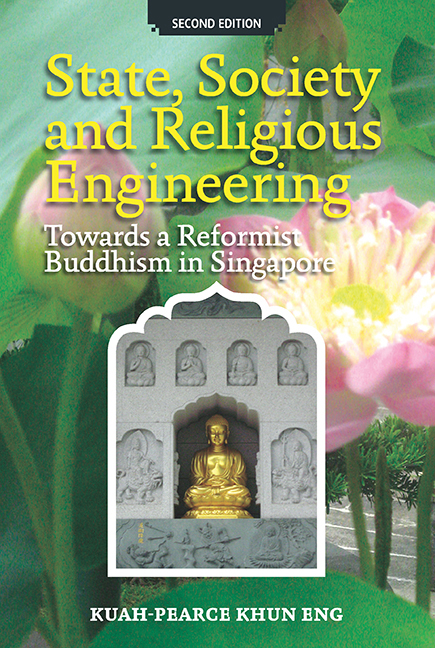Book contents
- Frontmatter
- Contents
- List of Diagrams
- Note on Romanisation
- Preface to the Second Edition
- Acknowledgements to the Second Edition
- Introduction
- PART 1 INVENTING A RELIGIOUS TRADITION
- 1 Reinventing Chinese Syncretic Religion: Shenism
- 2 Communicating with Gods, Deities and Spirits
- PART 2 STATE, SOCIETY AND RELIGIOUS ENGINEERING
- PART 3 TOWARDS A REFORMIST BUDDHISM
- Conclusion
- Postscript to the Second Edition: Towards a Humanist and Socially-engaged Buddhism
- Glossary
- Bibliography
- Index
1 - Reinventing Chinese Syncretic Religion: Shenism
from PART 1 - INVENTING A RELIGIOUS TRADITION
Published online by Cambridge University Press: 21 October 2015
- Frontmatter
- Contents
- List of Diagrams
- Note on Romanisation
- Preface to the Second Edition
- Acknowledgements to the Second Edition
- Introduction
- PART 1 INVENTING A RELIGIOUS TRADITION
- 1 Reinventing Chinese Syncretic Religion: Shenism
- 2 Communicating with Gods, Deities and Spirits
- PART 2 STATE, SOCIETY AND RELIGIOUS ENGINEERING
- PART 3 TOWARDS A REFORMIST BUDDHISM
- Conclusion
- Postscript to the Second Edition: Towards a Humanist and Socially-engaged Buddhism
- Glossary
- Bibliography
- Index
Summary
INTRODUCTION
Since the 19th century, the Chinese in Singapore have been practising what was commonly known as bai shen, literally “praying to the deities and gods”. This is the traditional Chinese religious syncretism. It is non-institutional and individual-based and fulfills the functional, socio-psychological and religious needs of the practitioners. The complex and syncretic nature of Chinese religion has resulted in it being termed differently by different scholars. Tan refers to it simply as Chinese Religion (Tan, 1995: 139) while others such as Hu called it “Siniticism” to denote the indigenous Chinese belief system (Hu, 1969:32) and Elliot termed it Shenism (Elliot, 1955). Wee noted that majority of the Chinese in Singapore who called themselves Buddhists were in fact practising Chinese religion with Buddhist elements (Wee, 1976: 155-188). While there is a variation in the terms and labels for Chinese religious syncretism, I have chosen to use the term “Shenism” as expounded by Elliot, as the Chinese continue to use the term “baishen” when worshipping their gods and deities. The term “shen” is used to describe gods and deities within the Chinese religious syncretism.
The early migrants, particularly the women, were engaged in a process of cultural reinvention. In this process of cultural reinvention, invented traditions are seen as “traditions actually invented, constructed and formally instituted and those emerging in a less traceable manner within a brief and dateable period – a matter of a few years perhaps – and establishing themselves with great rapidity” (Hobsbawm and Ranger, 1983). By reproducing familiar gods and deities and adapting ritual practices to the local environment, as well as inventing new ones, the Singapore Chinese are constantly negotiating their religious needs within the Chinese cosmological boundary.
CHINESE COSMOLOGY AND COSMOGONY
The Chinese cosmogony and cosmological worldview is predominantly a synthesis of Daoist and Buddhist metaphysical ideas, with Confucianism providing the moral base. The extent to which these religious doctrines are intertwined and integrated constitutes the strength and uniqueness of the Chinese religious system (DeGroot, 1964, Weber, 1951, Yang, 1961). It is therefore possible to identify the Chinese cosmogonic and cosmological worldview as comprising the Daoist, Buddhist, Confucianist and Shenist universes (Diagram 1.1).
- Type
- Chapter
- Information
- State, Society and Religious EngineeringTowards a Reformist Buddhism in Singapore (Second Edition), pp. 21 - 55Publisher: ISEAS–Yusof Ishak InstitutePrint publication year: 2009



